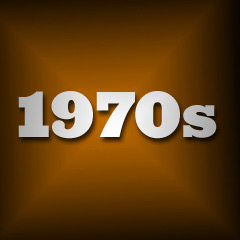
|
![]()
Greatest Films of the 1970s
1970 | 1971 | 1972 | 1973 | 1974 | 1975 | 1976 | 1977 | 1978 | 1979
Title Screen Film Genre(s), Title, Year, (Country), Length, Director, Description 

Amarcord (1973, It./Fr.) (aka Fellini Amarcord), 127 minutes, D: Federico Fellini
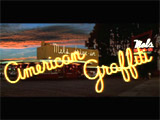

American Graffiti (1973), 110 minutes, D: George Lucas
In pre-Kennedy assassination America and in the pre-Vietnam War era, a time of innocence, this nostalgic, coming-of-age story features the songs of its era, in a classic sound-track provided by Wolfman Jack's Rock 'n' Roll radio show. Director George Lucas memorialized his own teenage years in Modesto, California in this episodic, idealized, low-budget tale of a bygone era with numerous subplots. On their final summer night after their Class of 1962 graduation, two clean-cut, college-bound California high schoolers Curt (Richard Dreyfuss) and Steve (Ron Howard) - with girlfriend Laurie (Cindy Williams), cruise the streets of their N. California town in their hot rods, and eat at Mel's Diner. Other characters include hot-rodders John (Paul Le Mat) and Falfa (Harrison Ford), nerdy Terry the Toad (Charles Martin Smith), pre-teen Carol (Mackenzie Phillips), a mysterious girl in a white T-Bird (Suzanne Somers), and an experienced Debbie (Candy Clark).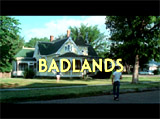

Badlands (1973), 95 minutes, D: Terrence Malick
Inspired and based on the murder spree of a killing, loving couple, Charles Starkweather and Caril Ann Fugate, in the late 1950's in Nebraska and bordering states - a daring, directorial film debut for Terrence Malick. Social outcast and misfit, James Dean look-alike ex-garbage collector Kit Carruthers (Martin Sheen) romances a naive, lackadaisical, starry-eyed, celebrity magazine-addicted 15 year old teenager Holly Sargis (Sissy Spacek) (who narrates the film in a deadpan tone), kills her disapproving father (Warren Oates), and then embarks on a state-wide flight - and shocking, emotionally-apathetic and casual, homicidal binge - into the badlands of South Dakota and Montana. The disturbing, complex character study observes the twisted, strange actions of the couple as they are hunted down and apprehended.


Day For Night (1973, Fr./It.) (aka La Nuit Americaine), 115 minutes, D: François Truffaut



The Day of the Jackal (1973, UK/Fr.), 143 minutes, D: Fred Zinnemann
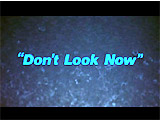




Don't Look Now (1973, UK/It.), 110 minutes, D: Nicolas Roeg
Based on a short story by Daphne De Maurier - a supernatural, mysterious, eerie, psychological thriller about a British couple in Venice. Following the tragic, accidental drowning of their daughter, John and Laura Baxter (Donald Sutherland and Julie Christie) travel to Venice where he works on restoring a church, still shattered and haunted by their child's death. The film is highlighted by their extended love-making scene while both are dressing for dinner. In the off-season resort, they meet two elderly sisters, Wendy and Heather (Hilary Mason and Clelia Matania), one of whom is blind but claims to be psychic. She insists that, in visions, she sees the spirit of the Baxters' red-coated daughter, and possesses a message of warning from the dead child. While John is skeptical and resistant, he catches a flashing, random glimpse of a red-raincoated 'child' darting around a dark street corner alley - and he sees Laura and the sisters on a funeral gondola drifting down a Venetian canal. The film concludes with John racing in pursuit after the red-garbed figure through Venetian alleys, only to be slashed across the throat by the androgynous dwarf figure. He falls onto the stone floor and bleeds to death - punctuated by the peals of bells, swirling camera angles, and quick images from earlier in the film. John's funeral at a Venetian canal-side church ends the film.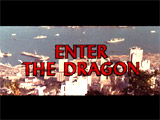

Enter the Dragon (1973, US/HK), 98 minutes, D: Robert Clouse
A big-budget, American/Hong Kong co-production (and the first American-produced martial arts film), shot on location in Asia. This legendary film is considered the best "chopsocky" or "kickfest" (kung fu and martial arts) film ever made by an American studio (Warner Bros). It starred influential action cult hero Bruce Lee in his final, signature film role before his untimely death at the age of 32. Partly inspired by the Lee-helmed film Way of the Dragon (1972) (aka Return of the Dragon), the film pits a renegade, villainous Shaolin Temple monk named Han (Shih Kien) against a Jeet Kune Do master named Lee (Bruce Lee), who is recruited by the British to infiltrate Han's drug and prostitution operation under the guise of taking part in his annual, invitational competition on a mysterious island fortress near Hong Kong. The martial-arts tournament between champions is sponsored by the crime boss - a one-handed, blood-thirsty mastermind who at one point supplements his missing hand with a fearsome metal claw. The film is only semi-serious, featuring not only a subplot about an indebted, American playboy-adventurer named Roper (John Saxon), one of the competitors, but an added blaxploitation character named Williams (Jim Kelly, a real-life ex-football star, and African-American karate champion who would later star in a black martial arts film titled Black Samurai (1977)), and a satirical jab at the James Bond thriller films with Lee playing a Bond-type character who doesn't need gadgetry. The most memorable scene is the climactic showdown between Lee and Han in a hall of mirrors (with homage to Welles' The Lady From Shanghai (1948)), as well as the first fight in the competition between Lee and O'Hara (Robert Wall), Han's top man responsible for the death of Lee's sister Su Lin (Angela Mao - the "female Bruce Lee"). There is also an uncredited cameo by Chuck Norris as a Messenger, who had a memorable fight scene with Lee in Way of the Dragon (1972), as well as the first, brief screen appearance by Lee's martial arts "successor" and cinema legend, Jackie Chan. With an aggressive score by Mission Impossible's (TV) composer Lalo Schifrin.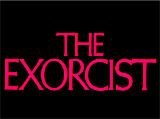


The Exorcist (1973), 120 minutes, D: William Friedkin
A disturbing, shocking, exploitative, and frightening film adaptation of William Peter Blatty's best-selling, blockbuster book about satanic demon possession. A sweet pre-teenaged girl Regan (Linda Blair) becomes possessed by an evil spirit - and is soon transformed and disfigured into a head-rotating, levitating, green vomit-spewing, obscenity-shouting creature. Her divorced mother Mrs. MacNeil (Ellen Burstyn) is at wit's end, until she calls on a dedicated, faith-questioning Jesuit priest Father Karras (Jason Miller) to exorcise the malevolent devil from her daughter's body. An elderly priest Father Merrin (Max von Sydow), whose archaeology project released the Satanic being, also risks his life to administer rites of exorcism with incantations and holy water.

Fantastic Planet (1973, Czech/Fr.) (aka La Planete Sauvage), 72 minutes, D: Rene Laloux
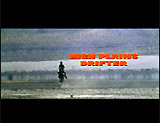
High Plains Drifter (1973), 105 minutes, D: Clint Eastwood
In this stylistic, controversial, off-beat and bizarre revisionist western, director/star Eastwood (with his second directorial effort, and his first western) portrayed the enigmatic, anti-hero loner, named only as The Stranger (similar to Sergio Leone's "Man with No Name"). He took a stylized approach to Sergio Leone's 1960s "spaghetti" westerns and Fred Zinnemann's High Noon (1952). The bleak and violent morality tale began with the 'high plains drifter' slaughtering three hired guns after arriving in the corrupt mining community of Lago. He was then revered as a protective and righteous savior of the townsfolk, and hired by the mining company to hold off three more desperadoes on their way to town: outlaw Stacey Bridges (Geoffrey Lewis) and brothers Dan (Dan Vardis) and Cole Carlin (Anthony James). The trio had brutally whipped and killed the town's local lawman Marshal Jim Duncan (Buddy Van Horn) who was buried with an unmarked gravestone. Dwarf Mordecai (Billy Curtis) (appointed by the Stranger as the town's mayor and sheriff) and innkeeper's wife Sarah Belding (Verna Bloom), the Stranger's perverse love interest, suspected that the Stranger had unusual intentions. He made increasingly-bizarre and outlandish demands, painted the town red, and renamed it "Hell." By his cryptic presence, the almost-supernatural Stranger revealed the townspeople's secret cowardice and hypocrisy. The film ambiguously asked: was he the symbolic reincarnation of the town's murdered honest young lawman Jim Duncan, or his brother seeking retribution? In the concluding sequence, he contemptuously killed three vengeful desperadoes and then abruptly and mysteriously left. As he rode away from the ruined town as Mordecai asked: "I never did know your name." The Stranger replied: "Yes, you do. Take care."


The Last Detail (1973), 103 minutes, D: Hal Ashby




The Long Goodbye (1973), 112 minutes, D: Robert Altman
Among the film's off-beat cast was the main character - quintessential detective Phillip Marlowe (Elliott Gould), deceptively portrayed as hip, laid-back, sloppy, and casually-cool. Altman was criticized for taking liberties and degrading the familiar Raymond Chandler character, for updating the novel's 40s time-frame to the 70s, and for drastically changing the ending. He deflected outraged audiences by claiming plot wasn't as important as character analysis. The solitary, idiosyncratic and lonely Marlowe literally rambled throughout the film, joking with other characters and with himself (via a running monologue). Note Altman's first-person and constantly-moving camera (especially in the scene introducing Marlowe and his cat), and several versions of the movie's theme song - a John Williams/Johnny Mercer ballad (first sung under the credits).


Mean Streets (1973), 110 minutes, D: Martin Scorsese
Martin Scorsese's third full-length film with energizing early 60s rock 'n' roll - a low-budget, semi-autobiographical, realistic tale about four struggling, small-time hoods in New York's Little Italy trying to establish themselves. Tony (David Proval) owns the neighborhood bar, and Michael (Richard Romanus) is the local loan shark. Ambitious Mafia apprentice Charlie Cappa (Harvey Keitel) befriends violent hot-head Johnny Boy (Robert De Niro), who irresponsibly and recklessly incurs gambling debts and becomes dangerously obligated to Michael. Charlie's uncle Giovanni (Cesare Danova) is the local Mafia boss and grooming his nephew for 'respectable' gang life. Unclear and confused about his life's direction and loyalties, Charlie wrestles with his devout Catholic guilt, the temptations of the Mafia and its constrictions, his to-the-rescue- attempts to help Johnny Boy, and his feelings for Teresa (Amy Robinson), Johnny Boy's epileptic sister.


The Paper Chase (1973), 113 minutes, D: James Bridges



Paper Moon (1973), 102 minutes, D: Peter Bogdanovich
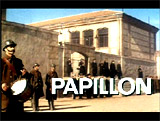


Papillon (1973), 150 minutes, D: Franklin J. Schaffner
In Franklin J. Schaffner's powerful, episodic, semi-biographical prison-escape drama, Steve McQueen starred as indomitable French convict Henri "Papillon" Charriere. A fellow prisoner was withdrawn and shy counterfeiter-forger Louis Dega (Dustin Hoffman), with Coke bottle-thick glasses. They bonded in friendship when Papillon became Dega's bodyguard. Both ended up in the notorious French penal colony in French Guiana, in a brutal work camp. After an escape attempt when he was punished with solitary confinement and reduced rations, Papillon under duress, refused to snitch on Dega for providing him with coconuts. Obsessed with flight and escape, Papillon continued to plot multiple escape attempts but was always recaptured and caged. In the final scene when Dega was reunited with Papillon on Devil's Island, Papillon realized that Dega had become mentally-ill and broken, accustomed to the solitary life on the windswept lonely island, and was unable to join him for his final successful escape effort.

Pat Garrett and Billy the Kid (1973), 106 minutes, D: Sam Peckinpah
Noted as director Peckinpah's final western, and as a complex and challenging film that was initially cut and re-edited by MGM studios against the director's wishes. Many years later, Peckinpah released his own version of the revisionist western. Although it featured lots of legendary western character actors, it replaced traditional western content (i.e., a dramatic gun-battle showdown between good and bad guys) with more character study, ambivalence and guilt over betrayal. Set in New Mexico in 1881, the tale was about the continuing confrontation between outlaw-turned-lawman Sheriff Pat Garrett (James Coburn), and his notorious old friend, anti-hero outlaw Billy the Kid (Kris Kristofferson) (aka William Bonney). Both were aging and viewing the handwriting on the wall - reluctantly facing the slow death of the "Old West" by desecrating future forces of corrupting, cold-hearted capitalism. The two were joined by enigmatic stranger Alias (folk singer Bob Dylan in his first screen role, and singing the memorable "Knockin' on Heaven's Door"). Garrett was named sheriff of Lincoln County to defeat his old friend Billy the Kid. Although Billy was successfully jailed and awaiting execution, he escaped by shooting two deputy sheriffs. Then, in Santa Fe, Garrett was hired by the Santa Fe Ring, a group of wealthy (and corrupt) New Mexico cattle-land barons, politicians, attorneys and greedy speculators, including the governor (Jason Robards Jr.) and cattle baron Chisum (Barry Sullivan). He was commissioned to bring in Billy and end his killing sprees and cattle rustling. Billy ignored Garrett's wise advice about escaping to Mexico, and met his fateful end at the hands of his friend. Garrett stalked Billy (back at Fort Sumner rather than fleeing to Mexico) while he was making love to Maria (real-life wife Rita Coolidge) and killed him point-blank. The film ended 28 years later in 1909 near Las Cruces, New Mexico, when Garrett was ambushed and ironically assassinated by the same group, the Santa Fe Ring, who had earlier hired him to kill Billy - a Faustian conclusion.
Save the Tiger (1973), 100 minutes, D: John G. Avildsen

Scenes From a Marriage (1973, Swe.) (aka Scener ur Ett äktenskap), 169 minutes, D: Ingmar Bergman


Serpico (1973), 129 minutes, D: Sidney Lumet
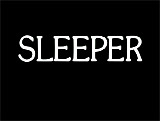


Sleeper (1973), 88 minutes, D: Woody Allen
One of Woody Allen's funniest films, a science fiction comedy classic and screwball comedy about the future - with Dixieland and swing music (from the Preservation Hall Band). This film was from Allen's earlier period, when he was known for appearing in or directing lightweight comedies, such as Take the Money and Run (1969), Bananas (1971), Play It Again, Sam (1972), and Everything You Always Wanted to Know About Sex* But Were Afraid to Ask (1972). Filled with one-liners, Allen's film both satirizes the 1970's and parodies sci-fi books and past classics, such as Buck Rogers "Serial" (1939), Carroll's Alice in Wonderland, Kubrick's 2001: A Space Odyssey (1968) and A Clockwork Orange (1971), George Lucas' THX 1138 (1971), George Orwell's futuristic novel 1984, and Aldous Huxley's Brave New World. It also evokes such slapstick comedy classics, such as Harold Lloyd and Buster Keaton films, the Keystone Kops, Chaplin's Modern Times (1936) and the Marx Brothers' Duck Soup (1933). Director/writer Woody Allen plays jazz clarinet musician and co-owner of a Greenwich Village health food store, nerdy Miles Monroe, who finds himself 200 years in the future in the dystopian year 2173. He learns that he was cryogenically 'frozen' in aluminum foil when complications arose - after he had entered a New York hospital in 1973 for what he thought was a minor peptic ulcer operation. (He was later asked, "It's hard to believe that you haven't had sex for two hundred years." "Two hundred and four," he replies, "if you count my marriage.") He soon finds out that he is considered both a subversive alien fugitive by a Big Brother-type totalitarian government and a savior to the rebels wishing to overthrow the police state. A classic fish-out-of-water comedy, he is inept as a disguised domestic robot (and in one funny scene passes around a silver-metallic round, orgasm-inducing "Orb" at a party), accidentally hides in a mechanized Orgasmatron, slips on a gigantic banana peel, wins a mock beauty pageant believing he's Miss America, and gets fitted for a suit by two robotic yet very Jewish tailors. The climax occurs when he and his love interest, a rich, clueless, pseudo-intellectual poetess named Luna Schlosser (Diane Keaton in her second appearance with Allen in a film, but in her first Allen-directed film) attempt to assassinate The Leader (a wheel-chair bound dictator with a white dog), who is ultimately reduced to a benign, disembodied nose after a bombing - and then steam-rolled. One sly cameo is that of Douglas Rain as an evil computer near the end of the film, gently spoofing his role as HAL from 2001: A Space Odyssey (1968), and Mike Myers' Austin Powers series owes a debt to this film.
The Spirit of the Beehive (1973, Sp.) (aka El Espiritu de la Colmena), 97 minutes, D: Victor Erice
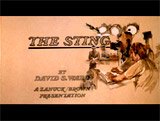


The Sting (1973), 129 minutes, D: George Roy Hill
This blockbuster Best Picture winner was an entertaining, stylish, playful, charming, over-produced crime-caper that revived interest in Scott Joplin's ragtime music. It reunited the successful 'buddy' teams of director George Roy Hill with stars Redford and Newman from the comic western Butch Cassidy and the Sundance Kid (1969) four years earlier. The comedy/drama had an entertaining, good-natured twisting plot about two small-time con artists (Paul Newman as Henry Gondorff/Mr. Shaw and Robert Redford as Johnny Hooker/Kelly) in 1930s Depression-and Prohibition-Era Chicago. The two joined together for revenge (using an off-track horse betting trick) against big-time New York racketeer mob boss Doyle Lonnegan (Robert Shaw) in the film's conclusion. Inter-titles highlighted the heist's clever steps (the "Set-Up," the "Hook," the "Tale," the "Wire," the "Shut-Out," and the "Sting").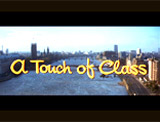



A Touch of Class (1973, UK), 105 minutes, D: Melvin Frank


The Way We Were (1973), 118 minutes, D: Sydney Pollack
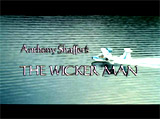



The Wicker Man (1973, UK), 97 minutes, D: Robin Hardy